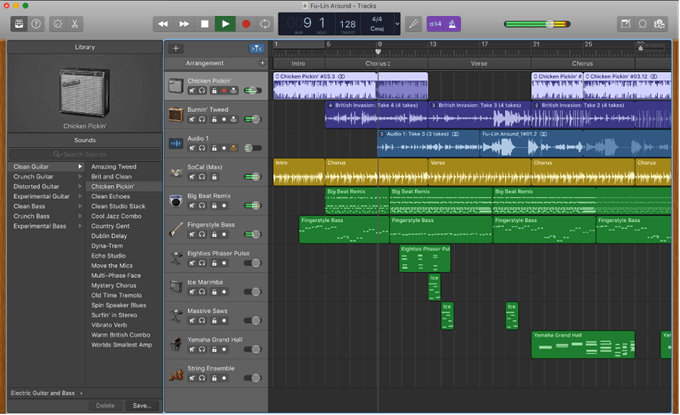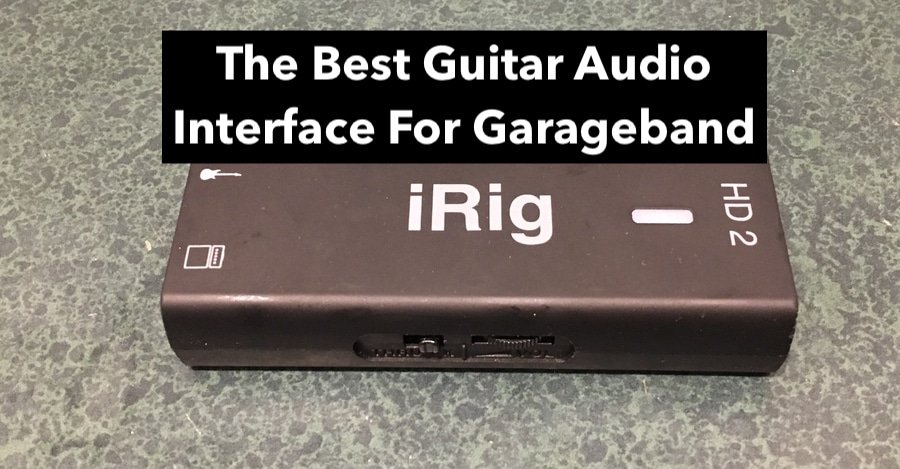Multiple Inputs To Mac Garageband
Virtual DJ showed each song's spectral energy in a small graph in each deck and in a larger graph along the top displaying sampled selections. We started with the Browser, which is anchored by a specialized, music-oriented tree view in the left sidebar. Download rmx 1000 for virtual dj 8 0 full version. We dragged some MP3s into the right and left decks.
You can create Aggregate Device to increase the number audio inputs and outputs available at the same time. You can also use an Aggregate Device if your application doesn't support separate input and output devices.
- Multiple Inputs To Mac Garageband 2
- Multiple Inputs To Mac Garageband Software
- Multiple Inputs To Mac Garageband Pro
Multiple Inputs To Mac Garageband 2


With Logic Pro, GarageBand, and MainStage, you can use a separate device for input and output. For example, you can use a USB microphone for input and the headphone jack of your Mac for output. Some applications not manufactured by Apple don't support separate input and output devices.
Virtual DJ is a download software used by DJs to replace their turntables and CD players, and use digital music instead of vinyl and CDs. In the same way that the CD players used by DJs have more options than a regular Hi-Fi CD player, DJ Virtual for Windows has more options than a simple media player. Virtual DJ Software, MP3 and Video mix software. VirtualDJ provides instant BPM beat matching, synchronized sampler, scratch, automatic seamless loops. Free download virtual dj media player. Download virtual dj player 7.0 for free. Multimedia tools downloads - VirtualDJ PRO Full by Atomix Productions and many more programs are available for instant and free download. Jan 24, 2020 Virtual DJ Free, free download. A free and complete DJ package for mixing, scratching and playing music files with a bunch of special effects. Review of Virtual DJ Free. Includes tests and PC download for Windows 32 and 64-bit systems. Virtual dj mixer player free download - Virtual DJ Mixer, Virtual Music mixer DJ, Virtual DJ MP3 Mixer, and many more programs.
Nov 23, 2009 How do I use multiple USB Microphones in Garageband? November 23, 2009 / Dave Taylor / MacOS X Help / 6 Comments While your Macintosh is a fantastic audio editing machine, you may have noticed that Garageband can only see one microphone at a time.
Set up an Aggregate Device
When you create an Aggregate Device, make sure to connect all external audio interfaces first.
- From the Finder, choose Go > Utilities. Open the Audio MIDI Setup application.
- Click the Add (+) button on the bottom-left corner in the Audio Devices window and chose Create Aggregate Device.
- A new Aggregate Device appears in the list on the left side of the window. To rename the device, double-click it.
- With the new Aggregate Device selected, enable the checkbox labeled 'Use' on the left side of the Audio Devices window. Do this for each device you want to include in the Aggregate Device. The order in which you check the boxes determines the order of the inputs and outputs in applications like Logic Pro and MainStage. For example, the first box you checked will be inputs one and two, the second box checked will be three and four, and so on.
The list on the right shows the currently connected audio devices and the number of input and output channels for each one.
- To use the clock of a device as the master clock for all the combined devices, choose the device from the Clock Source menu of the Aggregate Device. Choose the device with the most reliable clock.
- If your audio devices all work with word clock, connect them together using a word clock cable. Connect the cable from the device you designated as Clock Source to the input of each other device. Refer to your audio device product documentation for specific details.
- If any of your devices don't work with word clock, select the Drift Correction checkbox for any devices not designated clock master.
Use an Aggregate Device with Apple music creation software
- Open your application.
- Do the following depending on the application you're using:
- For Logic Pro, choose Logic Pro X > Preferences > Audio, then select Devices.
- For GarageBand, choose GarageBand > Preferences > Audio.
- For MainStage, choose MainStage > Preferences > Audio.
- Choose the Aggregate Device from the Output Device pop-up menu. Logic Pro and GarageBand automatically set the Input Device to the match the selected output device, which you can change if you want to use a different input device. In MainStage, you must manually select the input device.
- In Logic Pro and MainStage, click Apply Changes.
GarageBand automatically switches to the new input device.
Use the Aggregate Device as the sound output of your Mac
When you set the Aggregate Device as the sound output for your Mac, sounds from other apps on your Mac play through the Aggregate Device. The Aggregate Device also becomes the System Setting option in the Output and Input Device menus of your Apple music creation apps.
Multiple Inputs To Mac Garageband Software
- From the Finder, choose Go > Utilities. Open Audio MIDI Setup.
- Control-click the Aggregate Device in the left column, then choose 'Use this device for sound output' or 'Use this device for sound input.'
Multiple Inputs To Mac Garageband Pro
Nov 18, 2007 Recording with multiple inputs into GarageBand Posted on November 18, 2007 by Daniel Roop I have found that it was a lot of work to record three seperate tracks, on three seperate computers and then sync them all up afterwards for 2nd Player. Oct 17, 2017 Combine multiple audio interfaces by creating an Aggregate Device. An Aggregate Device lets you use audio inputs and outputs from different devices at the same time with audio applications like Logic Pro X, GarageBand, MainStage, and most other Core Audio-compliant applications. Nov 18, 2007 Recording with multiple inputs into GarageBand Posted on November 18, 2007 by Daniel Roop I have found that it was a lot of work to record three seperate tracks, on three seperate computers and then sync them all up afterwards for 2nd Player. Now that you’ve created an aggregate device, it’s time to go back into GarageBand and select the proper device. Go to File New and select the type of project you wish to use. Look in the bottom left corner and click on the arrow beside Details. Click Input Device and select the aggregate device from the list. And recording multiple inputs at the same time doesn’t require a high-end audio application—Apple’s GarageBand will do the trick. Choose a different input source for each GarageBand Real. Oct 17, 2017 An Aggregate Device lets you use audio inputs and outputs from different devices at the same time with audio applications like Logic Pro X, GarageBand, MainStage, and most other Core Audio-compliant applications. Learn how to setup and use an Aggregate Device.